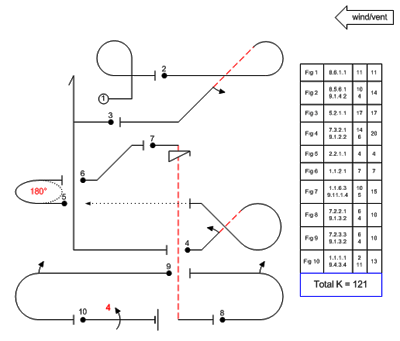What does an Aresti diagram look like?
 In order to write aerobatic manoeuvres (bits of figures), figures and sequences down on paper so that other people can read, fly and judge them a universal 'language' is essential. The system used throughout the aerobatic world was originally developed by the Spanish aerobatic ace José Louis Aresti.
In order to write aerobatic manoeuvres (bits of figures), figures and sequences down on paper so that other people can read, fly and judge them a universal 'language' is essential. The system used throughout the aerobatic world was originally developed by the Spanish aerobatic ace José Louis Aresti.
To become proficient as an aerobatic judge or pilot a good understanding of the Aresti Aerobatic System (Condensed) is a priority. It has a basic set of 'rules' which govern how the symbols are used, and each manoeuvre has an identifying reference number with a numeric coefficient to define the difficulty rating, allowing the user to build composite figures with the relevant 'K-factors'. The catalogue lists the complete range of basic and complementary manoeuvres from which aerobatic figures may be constructed for inclusion in Known, Free Known (pilot designed) and Unknown / Free Unknown sequences to meet the specific requirements at any contest.
BAeA Rules
The British Aerobatic Association has its own rules to define and control the conduct of power and glider aerobatic competitions in the UK, these extending the international regulations to cover contest flying at our own Club, Sports, Intermediate and Advanced levels as well. Included also are procedures on contest and judging line administration, guidance notes on the handling of judges' score sheets and the computer results calculation process. These key BAeA and CIVA reference works are normally revised annually to embody current thinking in the sport.
Judging: British Aerobatics competition classes or levels Judging: The Aresti Catalogue families

